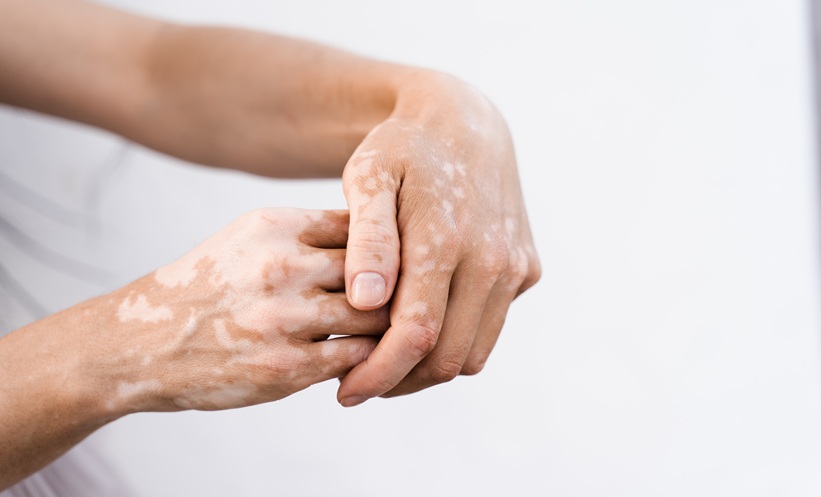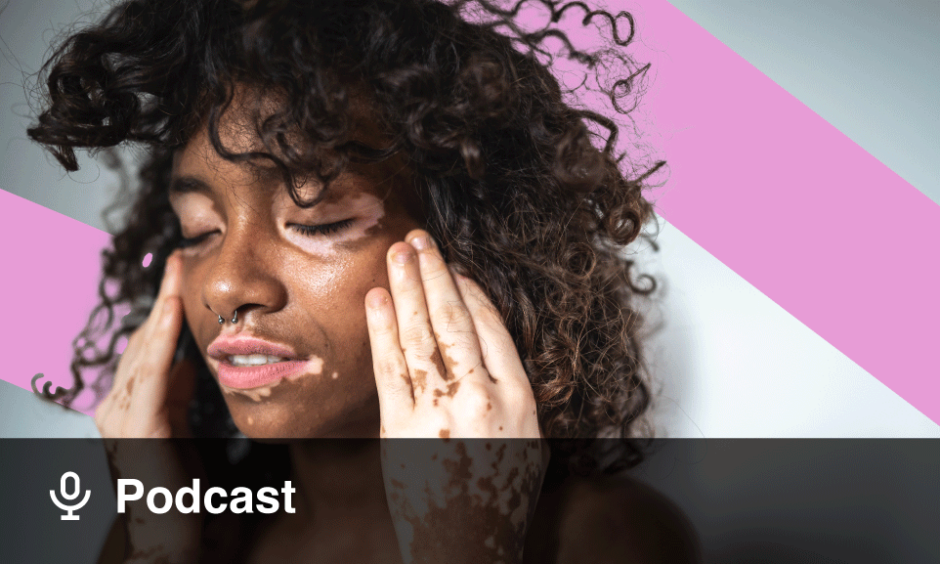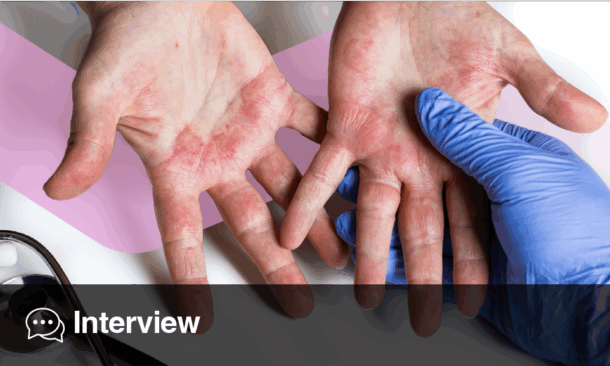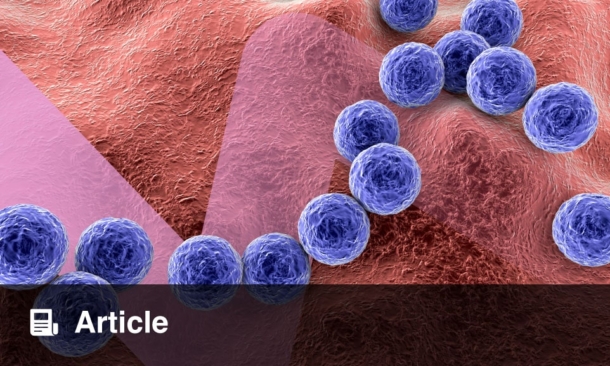VITILIGO is a common autoimmune skin disorder characterised by pigment loss, leading to visible white patches on the face and extremities. Beyond its physical impact, vitiligo often disrupts social interactions and affects psychological wellbeing. Although treatments such as topical corticosteroids, phototherapy, and surgical procedures are available, they are frequently only partially effective and may cause side effects, including skin atrophy and scarring. A lack of proven drug therapies has long hampered clinical management of the condition (Citation1).
Ultraviolet B (UVB) phototherapy is the traditional non-pharmacological approach, promoting repigmentation by stimulating melanin production (Citation2, Citation3). However, the autoimmune mechanism underlying vitiligo, driven by interferon-gamma (IFN-γ), CD8+ T cells, and Janus kinase (JAK) signalling, highlights the need for targeted therapies (Citation4). The only FDA-approved drug for repigmentation in vitiligo is ruxolitinib, a topical JAK inhibitor (Citation5), though interest is growing in testing other JAK inhibitors (Citation6).
Tofacitinib, an oral JAK1/3 inhibitor previously approved for rheumatoid arthritis, has shown potential in reducing IFN-γ levels in the skin. Recent studies suggest that combining tofacitinib with UVB enhances therapeutic outcomes (Citation7–9). However, clinical data from Asian populations remain limited.
In a new double-blind randomised trial, researchers tested whether tofacitinib combined with UVB (TOF-UVB) offers superior outcomes compared to UVB alone. Efficacy was measured using the Vitiligo Area Scoring Index (VASI), the Dermatology Life Quality Index (DLQI), and levels of inflammatory markers such as IL-17, IL-23, IFN-γ, and IL-6 (Citation10).
Findings revealed that both treatment groups showed significant improvement after 24 weeks, but patients receiving TOF-UVB therapy demonstrated greater reductions in inflammatory cytokines and superior repigmentation. This suggests that JAK inhibition enhances the immunomodulatory effect of UVB by suppressing melanocyte-damaging pathways.
While the study supports the safety and efficacy of TOF-UVB in a Chinese cohort, limitations include the small sample size and absence of a tofacitinib-only group. The authors emphasise the need for larger, long-term trials, including paediatric and stratified patient groups, to confirm these promising results.
Overall, this study strengthens the case for combining JAK inhibitors with UVB phototherapy as an effective strategy to improve vitiligo outcomes and patient quality of life.
Reference
Guo X et al. The efficacy of narrowband ultraviolet B phototherapy combination with tofacitinib in the treatment of vitiligo: a randomized controlled trial. J Dermatolog Treat. 2025;36(1):2479567.








